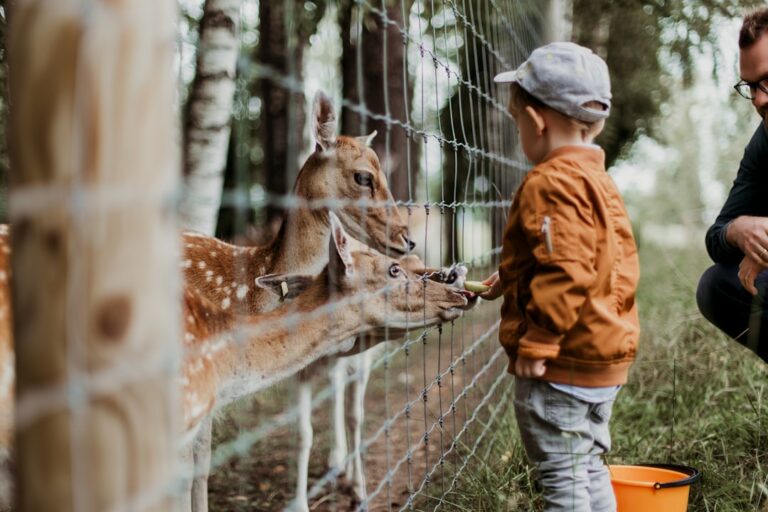Living with Elephants: From Wonder to Menace
Seeing elephants during a safari is a breathtaking experience, observing their huge bodies, distinctive ears, and long trunks from a safe distance. However, for those who reside near these majestic creatures, the reality is quite different.
– Elephants in African countries have experienced significant declines in numbers over the years. Fortunately, conservation efforts implemented since the 1980s have led to some recovery in their populations. In Southern African nations, where half of the continent's elephant population is found, their increased numbers have resulted in conflicts with humans.
Would you like to know more about Markdown?
– Some countries are attempting to decrease their elephant populations. For instance, Botswana, home to the world's largest number of elephants, has controversially promoted hunting by wealthy tourists. Recently, President Mokgweetsi Masisi criticized the German government for discussing a potential ban on importing elephant parts, warning that he might send 20,000 elephants to Berlin.
The diplomatic argument created attention-grabbing headlines. However, it overshadowed the important issues that elephants, rural communities, and conservationists are facing as they work together to address these challenges.
*The diplomatic argument created attention-grabbing headlines. However, it overshadowed the important issues that elephants, rural communities, and conservationists are facing as they work together to address these challenges.*
Changes in Elephant Population Over Time
"Elephant numbers across Africa have dropped by more than 150,000 in the past decade."
This quote suggests a significant decline in the elephant population in Africa over the last ten years.
After extensive periods of overhunting and poaching for their valuable ivory tusks and meat, the population of elephants in Africa saw a drastic decline during the 1970s and 80s. The World Wildlife Fund (WWF) reported that approximately 100,000 elephants were being killed each year during that period. In 1930, it was estimated that between three to five million elephants lived across the continent, but by 1979, this number had plummeted to 1.3 million, as stated by the WWF. Researchers examining data dating back to the 1500s have found that African elephant populations have decreased by around 98 percent.
– Total elephant numbers in Africa saw a decline starting from 1979 until conservation efforts like banning sales of elephant parts and trophy hunting helped in stopping the decrease.
– As per WWF estimates, there are currently around 415,000 elephants in Africa.
This figure remains low in comparison to historical data. The African bush elephant is categorized as endangered by the International Union for Conservation of Nature (IUCN), while the African forest elephant is classified as critically endangered, indicating that they are still at risk of extinction.
The African bush elephant is a large creature that lives in the savannah grasslands of Southern and Eastern Africa, comprising 70 percent of the continent's total elephant population. Its relative, the African forest elephant, is found in Western and Central Africa and can be distinguished by its smaller, rounder ears and short, pointed tusks.
– Botswana, Namibia, Angola, Zambia, and Zimbabwe collectively hold over 50% of the African bush elephant population.
– Botswana specifically boasts around 130,000 bush elephants, which is approximately half of the total in the region.
– The country is large with a population of only two million, similar in size to France which has a population of 67 million.
– In Botswana, there is roughly one elephant for every 15 people.
Zimbabwe possesses approximately 100,000 bush elephants, making it the country with the second-largest population of these majestic creatures.
Challenges Faced by Increasing Elephant Population
The growing numbers of elephants have started to pose a problem due to various reasons. One major challenge is the increasing human-elephant conflict, leading to more incidents of elephants entering human settlements in search of food. This has resulted in property damage and even loss of life in some cases. Furthermore, the expansion of agricultural lands and urban development has encroached upon elephant habitats, leading to a decrease in their natural living spaces. These factors have contributed to the rising challenge posed by the growing elephant population.
– The feeding habits of the largest living land animals can significantly impact ecosystems over their lifespan of approximately 60 years. According to researcher Lucy King from the non-profit organization, Save the Elephants, elephants have minimal natural predators apart from humans, and in the absence of human intervention, their population can rapidly increase.
"When left alone, they reproduce efficiently and their population can steadily increase over time because their chances of survival are high," King says.
According to the United Nations Population Fund, the human population in Southern and Eastern Africa has doubled from 312 million in 1994 to 633 million in 2021. This rapid growth has led to humans occupying more land area and encroaching on wildlife habitats. Settlements and farms have disrupted the natural habitats of roaming wildlife by cutting them off from water and food sources.
– Humans and elephants are increasingly encountering each other, leading to conflicts over shared resources. Herbivores searching for food may stray onto farms, damage infrastructure, or cause harm to local communities. In response, locals sometimes resort to attacking these animals, resulting in dangerous consequences for both parties.
– Climate change has led to elephants moving to new and unpredictable locations in search of food and water due to scarcity.
Markdown format:
– Climate change has led to elephants moving to new and unpredictable locations in search of food and water due to scarcity.
Zimbabwe is a significant hotspot for conflicts, with human-elephant clashes on the rise throughout the area, as mentioned by King.
Countries such as Zimbabwe and Botswana attribute clashes between elephants and humans to elephant overpopulation, suggesting that reducing their numbers could alleviate the issue. On the other hand, some experts disagree with this viewpoint, highlighting that Africa previously had a higher elephant population.
How Governments Have Addressed the Issue
Government efforts to address this issue vary. Some have attempted to implement regulatory measures while others have focused on educational campaigns. Additionally, there have been collaborations between governments and private sector organizations to come up with solutions. Quoted text: "It is crucial for governments to take proactive steps in addressing these challenges."
– South Africa, Namibia, Zimbabwe, and Botswana have each attempted to decrease the elephant population in their regions, but their efforts have faced backlash from animal welfare groups.
This text has been rewritten in Markdown format with unique words and phrases used to convey the same meaning.
– One practice involves culling, which refers to intentionally targeting and killing multiple animals, often including entire families at once.
– A culling campaign in South Africa's Kruger Park resulted in the killing of around 14,000 elephants between 1967 and 1995, which was a popular practice during the 1980s and 90s. After facing international criticism and backlash, African countries outlawed the practice due to calls for tourists to boycott countries that were culling elephants.
– South Africa lifted its culling ban in 2008, despite global objections. Zimbabwe, which had culled around 50,000 elephants from 1967 to 1988, is now contemplating reinstating the practice in 2021.
– Conservationists, including experts like King, believe that culling elephants can be incredibly cruel due to their emotional intelligence and capacity to experience trauma. In addition, this approach is deemed as ineffective and does not provide a viable solution to human-elephant conflicts.
—
*Conservationists, including experts like King, believe that culling elephants can be incredibly cruel due to their emotional intelligence and capacity to experience trauma. In addition, this approach is deemed as ineffective and does not provide a viable solution to human-elephant conflicts.*
Governments have tried to sell part of their elephant herds to zoos for human entertainment, which raises concerns among animal welfare groups.
– Rewritten text in Markdown format:
In 2021, Namibia held an auction for 170 elephants, but only a third of them were sold, amounting to 5.9 million Namibian dollars ($400,000). The sale received a lot of negative publicity and backlash, which in turn deterred potential buyers, according to officials.
One method to manage animal populations involves permitting trophy hunting. This practice entails granting licenses to tourists, typically from Western countries like the United States, allowing them to hunt a specified number of animals in designated areas for their horns, skins, or tusks. Frequently, male elephants, particularly those with larger tusks, are prime targets for these hunters.
Government officials and hunters in Southern Africa claim that hunting plays a crucial role in natural elephant population management and generates income for local communities. This, in turn, motivates these communities to discourage illegal poaching and maintain stable elephant numbers above a sustainable threshold. Hunting permits can be quite expensive, reaching up to $10,000 depending on the specific animal being targeted.
African governments often get upset when Western countries criticize their practices, which is why Botswana threatened to send 20,000 elephants to Germany. President Masisi of Botswana has strongly supported the idea of reintroducing hunting licenses. In 2019, soon after he became president, Botswana lifted a five-year ban on elephant hunting.
Arguments Against Hunting
Hunting has sparked debates and controversies in recent years. One of the main arguments against hunting is the moral and ethical concern for the well-being of animals. As one source puts it, "The act of killing animals for sport or recreational purposes raises serious ethical questions."
Another argument revolves around conservation efforts. Critics argue that hunting can disrupt ecosystems and lead to imbalances in wildlife populations. According to a different source, "Hunting can have negative effects on the environment and disrupt the natural habitat of various species."
Additionally, some opponents of hunting argue that it is not a sustainable practice. One source highlights that "the indiscriminate killing of animals for trophies or entertainment can have long-term consequences on biodiversity and ecological stability."
Overall, these arguments highlight the complexities and controversies surrounding the practice of hunting.
Some conservationists disregard the frustration expressed by African governments.
Markdown format:
Some conservationists dismiss this anger from African governments.
"I believe it is very short-sighted. It seems like a convenient excuse to support trophy hunting, which is a lucrative business," states Ross Harvey, a wildlife economist at Good Governance Africa. Harvey highlights that the money from trophy hunting, which began in colonial Kenya, mainly benefits wealthy businessmen who own hunting companies, rather than contributing to conservation initiatives.
"How much of conservation funding is actually used for conservation is uncertain, and it's unlikely that enough is being done to protect the environment. Additionally, it is unclear how much money benefits impoverished community members," he mentions. "After an elephant is removed, you are left dealing with the consequences of eliminating all the bulls, typically in their prime reproductive years."
– Description: Older male elephants assist younger bulls in locating food and water sources and teach them behavioral norms. Research has shown that the absence of these elder elephants can lead to aggressive behavior in younger males.
"Expect a rise in conflicts between humans and elephants due to the removal of male elephants responsible for controlling the herd. This may lead to an increase in crop raiding," according to Harvey.
What's the solution?
The text advises on finding a solution to a common problem or challenge. It discusses the importance of addressing the issue and offers guidance on how to approach it.
Harvey states that although the number of elephants may have risen since the 1990s, the primary issue is not "overpopulation" but rather the restriction of connecting land strips or corridors by humans. These pathways are crucial for elephants and other wildlife to migrate in search of food and habitat. By opening up these areas, human-elephant interactions can be minimized.
> Harvey says while elephant numbers may have increased since the 1990s, the real problem is not one of âoverpopulationâ but rather of humans cutting off connecting land strips or corridors which elephants â and all wildlife â use to migrate in search of food and habitat. Freeing up those spaces, he argues, will reduce human-elephant interactions.
>"If you shoot them, you just exacerbate the problem," he says.
He mentions that escalating the problem by shooting them is not a suitable solution.
>"There's only two solutions really," says King. "One, to have breathing space. We keep throwing up fences everywhere and stopping [elephants], so they get squeezed into areas where they can then deplete the vegetation incredibly fast. The only solution is to release the valves and make sure the fences come down. That does not mean that elephants should be everywhere … but you can't fence elephants in."
In the northern region of Botswana, the "Eco-Exist Project" collaborated with residents to locate and mark out 60 elephant corridors within the vast Okavango Delta. They then assisted communities in redesigning the layouts of villages to ensure that agricultural lands, residences, and other structures were situated away from these designated "elephant highways."
“`markdown
In the northern region of Botswana, the "Eco-Exist Project" collaborated with residents to locate and mark out 60 elephant corridors within the vast Okavango Delta. They then assisted communities in redesigning the layouts of villages to ensure that agricultural lands, residences, and other structures were situated away from these designated "elephant highways."
“`
– Approximately 65,000 hectares (160,600 acres) of farmland belonging to 500 farmers have been protected due to this project.
– Farmers have come together to share farm spaces and have surrounded them with fences or crops like chili to prevent elephants from entering, as they dislike these crops.
Another approach suggested by King involves educating individuals on coexisting peacefully with animals. Through her studies on effective methods to keep elephants away from residential areas and agricultural lands in southern Kenya, she has discovered some promising outcomes.
Rewrite:
King discovered that playing sound recordings of swarming bees caused elephants to disperse quickly. To address this issue, she innovated by constructing beehive fences around farms. This simple technique is beneficial for rural communities as farmers only require poles to set up hive boxes. Women can then collect and sell honey for additional income. The approach has now been implemented in 17 African countries and certain parts of Asia.
"We're really proud of it … and it's completely open source," according to King. "We allow people to access the manuals, create their own bio fence project, and take it from there. And what's fascinating is that it's successful in various locations."
– The method is only effective for small land areas and is at risk of being unsuccessful in drought conditions, which are not ideal for bees.


























